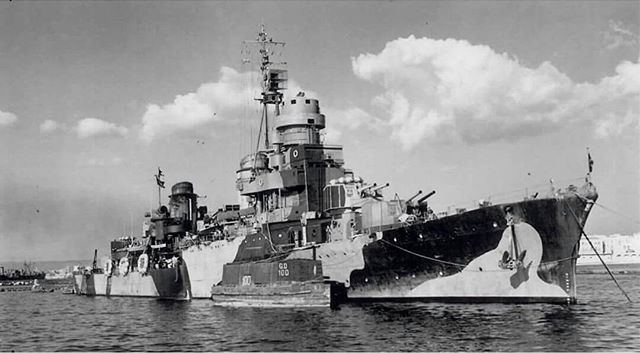Built 1939–1942 Planned 12 | In commission 1942–1980 Completed 4 | |
 | ||
Type Light cruiser/destroyer leader | ||
The Capitani Romani class was a class of light cruisers of the Italian navy. They were essentially designed to outrun and outgun the large new French destroyers of the Le Fantasque and Mogador classes. Twelve hulls were ordered in late 1939, but only four were completed, just three of these before the Italian armistice in 1943. The ships were named after prominent Ancient Romans.
Contents
Design
The Capitani Romani class were originally classed as "ocean scouts" (Esploratori Oceanici), although some authors consider them to have been heavy destroyers. In fact, after the war the two units still in service were reclassified caccia conduttori (Italian for flotilla leaders).
The design was fundamentally a light, almost unarmoured hull with a large power plant and cruiser style armament. The original design was modified to sustain the prime requirements of speed and firepower. Given their machinery development of 93,210 kW (125,000 hp), equivalent to that of the 17,000 ton cruisers of the Des Moines class, the target speed was over 41 knots (76 km/h), but the ships were left virtually unarmoured. As a result, the three completed warships achieved 43 knots (80 km/h) during trials. The Capitani Romani class vessels shipped a main battery of eight 135 mm guns guns, with a rate of fire of eight rounds per minute and a range of 19,500 m. They also carried eight 533 mm torpedo tubes. The wartime load dropped the operational speed by one to five knots, depending on the source.
Operational history
Only Scipione Africano saw combat. Equipped with the Italian-developed EC.3 Gufo radar, she detected and engaged four British Elco motor torpedo boats lurking five miles ahead during the night of 17 July 1943, while passing the Messina straits at high speed off Punta Posso. She sank MTB 316 and heavily damaged MTB 313 between Reggio di Calabria and Pellaro. A dozen British seamen lost their lives in this action. The engagement lasted no more than three minutes. Scipione Africano suffered minor damage and two injuries among its crew when German and Italian batteries deployed along the Italian coast opened fire in the aftermath. The cruiser had been ordered from La Spezia to Taranto, which she eventually reached at 9:46 AM. Her high speed was decisive to the outcome of the battle.
After her eventful passage into the Ionian Sea, she laid down four minefields in the Gulf of Taranto and the Gulf of Squillace from 4 to 17 August, together with the old light cruiser Luigi Cadorna.
Attilio Regolo was torpedoed by the submarine HMS Unruffled on 7 November 1942, and remained in drydock for several months with her bow shattered. She was interned in Port Mahon in the island of Minorca, Spain, after the Italian capitulation on 9 September 1943.
Ships
Four of the ships were scrapped before launch. Five were captured by the Germans in September 1943, still under construction. All five were sunk in harbour, one was raised and completed. Three were completed before the Italian armistice.
French post-War service
Attilo Regolo and Scipione Africano were transferred to France as war reparations. They were renamed Chateaurenault and Guichen respectively. The ships were extensively rebuilt for the French Navy by La Seyne dockyard with new anti-aircraft-focussed armament and fire-control systems in 1951-54. The ships were decommissioned in 1961-61.
General characteristics as rebuilt
Post-war Italian service
Giulio Germanico and Pompeo Magno served in the post war Marina Militare, being renamed San Marco and San Giorgio respectively. Both ships were extensively rebuilt in 1951-55 and fitted with American weapons and radar. Characteristics included:
San Marco was further rebuilt as a cadet training ship in 1963-65 when she was fitted with new CODAG machinery. New 76mm guns replaced the 40mm and X 5 inch mounting. San Marco was decommissioned in 1971, San Giorgio following in 1980.
